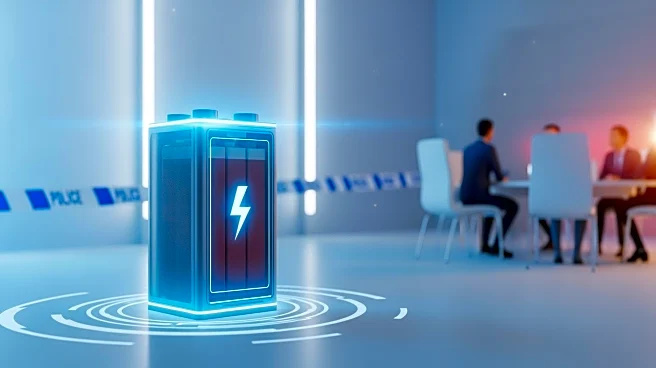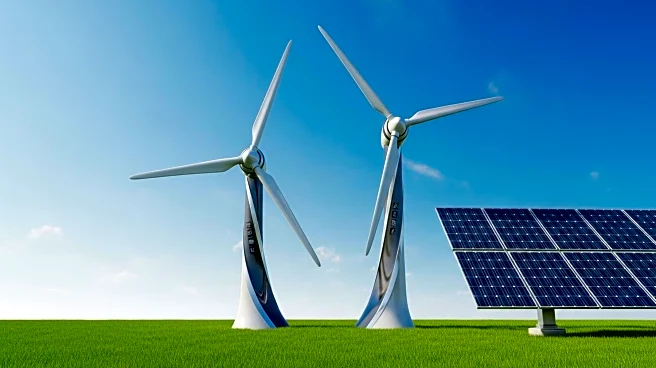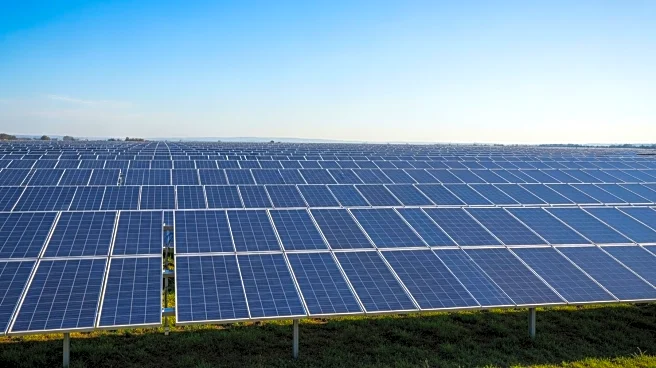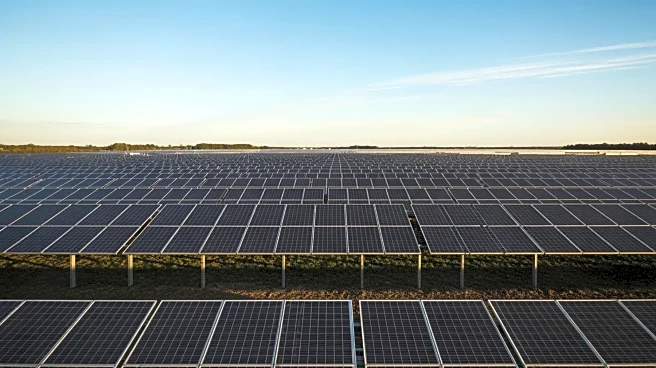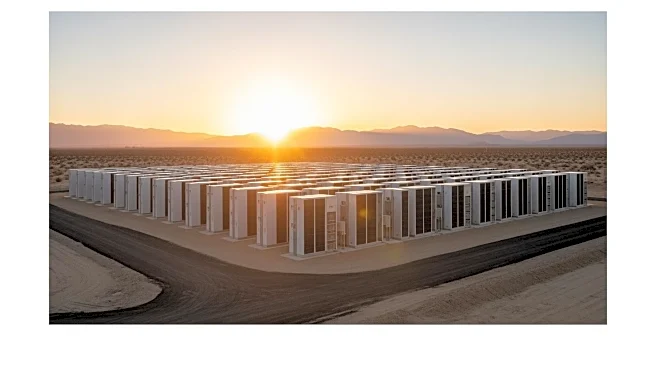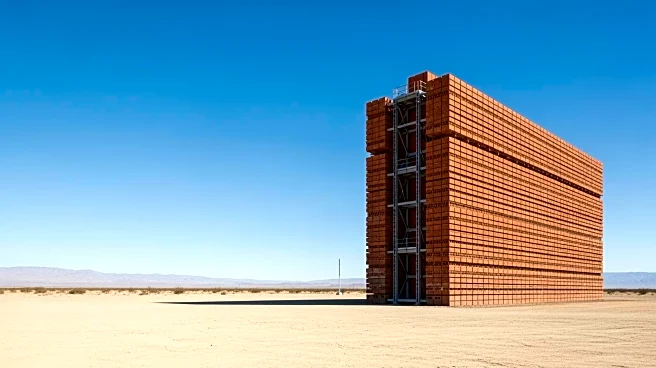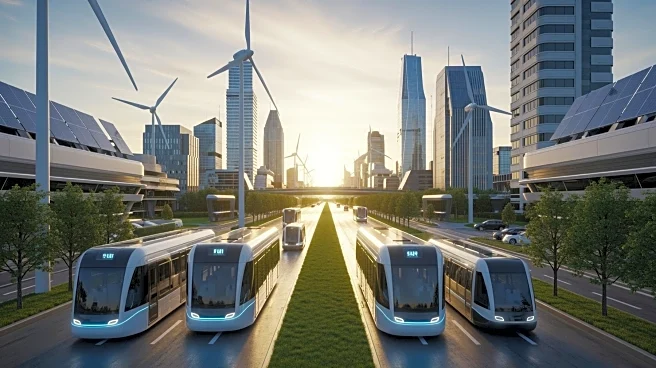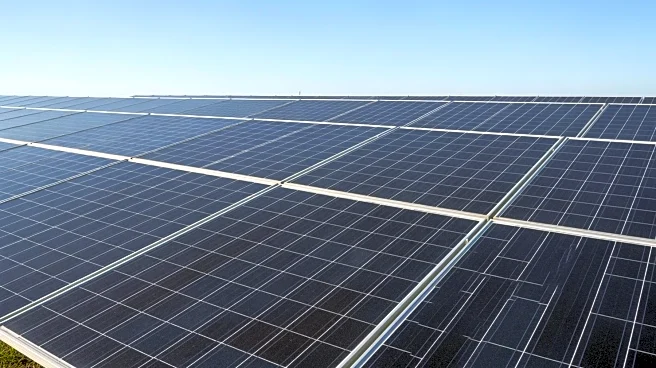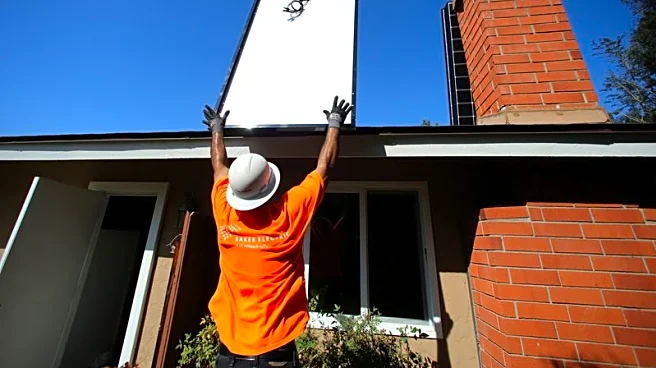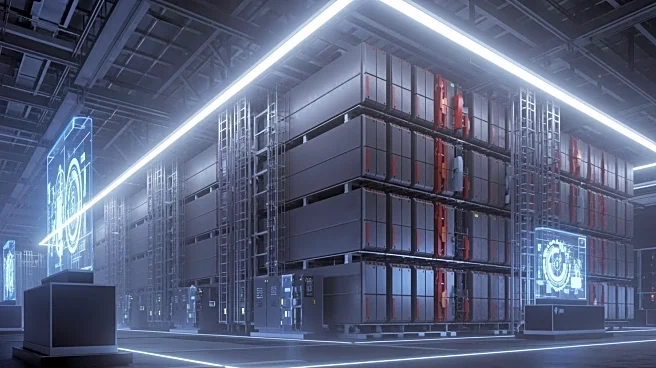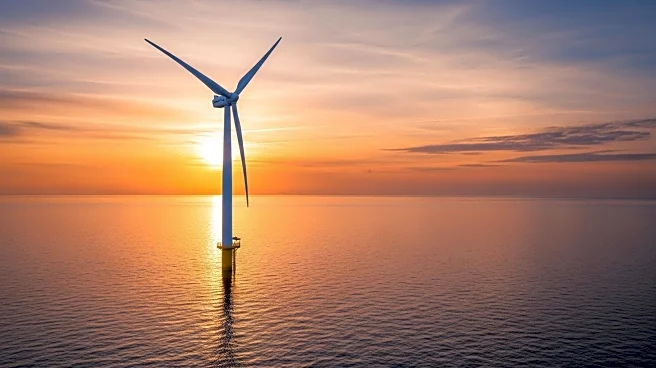What's Happening?
California has successfully navigated another summer without issuing Flex Alerts, thanks to significant investments in battery energy storage. The California Independent System Operator (CAISO) has not issued a Flex Alert since 2022, marking a turning
point in the state's energy management. Battery storage has grown over 3,000% in six years, from 500 megawatts in 2020 to over 15,700 megawatts today. This technology captures and stores solar energy for later use, helping stabilize the grid during peak demand periods.
Why It's Important?
Battery storage is crucial for California's climate goals, including achieving 100% carbon neutrality by 2045. The technology enables the grid to operate with reduced reliance on fossil fuels, providing a cost-effective and reliable alternative to aging gas-fired power plants. The shift towards battery storage supports the state's efforts to combat climate change and reduce greenhouse gas emissions. As battery technology continues to mature and become more affordable, it offers a promising solution for energy security and sustainability.
What's Next?
California's energy leaders are focused on further expanding battery storage capacity and integrating renewable energy sources into the grid. The state is also addressing challenges related to permitting and safety, as demonstrated by the approval of the Darden Clean Energy Project in Fresno County. Continued investments in battery technology and infrastructure upgrades are expected to enhance grid reliability and support the state's ambitious climate goals.
Beyond the Headlines
The transition to battery storage highlights the need for diversifying energy technologies to ensure grid stability and safety. While lithium-ion batteries are currently the most common, alternative technologies such as iron-air and flow batteries are emerging as potential solutions for longer-duration storage. The shift away from fossil fuels also underscores the importance of domestic manufacturing and supply chain resilience, as California and other states work towards energy independence and sustainability.
